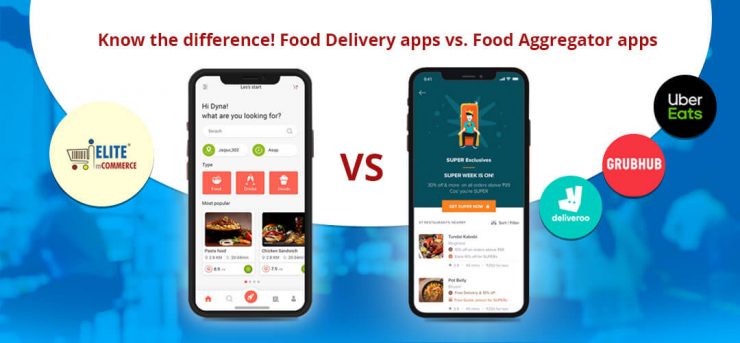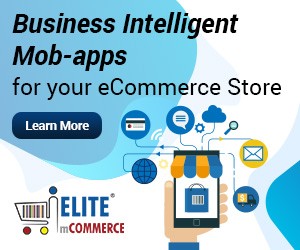As many food and beverage businesses increase their emphasis on delivery, they are faced with the opportunity to use online delivery apps to connect with their customers. Any restaurant operator who is starting to deal with online ordering benefits from a clear understanding of the differences between the third-party food aggregator apps and apps that directly connect customers to the restaurants they want to buy from.
According to Second Measure, U.S. food delivery in April 2020 was dominated by major delivery aggregators: Doordash with 45%, Grubhub with 23%, Uber Eats with 22%, and Postmates with 8%, leaving only 2% of sales going to other companies. Both independent restaurants and large national chains have formed partnerships with third-party platforms. Many restaurants see no other option but to do business with them due to the opportunity for higher sales volume.
These companies have some differences in how they operate but in general, they function similarly. They allow restaurants to list their menu on their platform, and if a delivery order has been placed, delivery contractors who use the platform can fulfil the order. Online orders can also include store pick-up instead, but delivery is one of the biggest attractions of third-party aggregators, since individual stores may not be able to support it on their own.
Third-party platforms can display a restaurant to hungry customers in their area browsing the app, but they take high commissions for every single order that passes through their platform, even if the customer eats from that restaurant regularly and doesn’t need the app to find them. Restaurants would like to have the convenience and traffic of the aggregator to appeal to customers who use the apps but dislike instances where the app takes a high cut while offering nothing in return. Some who use delivery aggregators are now publicly asking customers to use their individual websites and phone numbers to order, offering special sales for those who do so or limiting their menu on the app.
In an effort to avoid the limitations of third-party platforms, restaurants are turning to custom or hybrid delivery solutions. Hybrid delivery, growing in popularity among chain restaurants, means that restaurants run their own online ordering platform but use a third-party company for delivery. This reduces the issue of aggregators’ high commissions while also not requiring significant investment in a full-time delivery force.
An eCommerce and delivery app can be available to even smaller stores. Instead of paying commissions and fees to get the benefits of an app, stores can set up a custom app by paying a fixed monthly subscription for deployment and support. Many of the features offered by aggregators are still available to direct restaurant apps, such as digital payment processing and POS integration that make the online component of business much less difficult to coordinate with physical sales. While assigning delivery drivers is now up to the restaurant to handle, their app can produce mapping and route information for customer addresses to serve to delivery drivers.
Read also: Saving your Restaurant Brand from Food Aggregator Exploitation
Food delivery apps can exceed aggregator apps in many areas. Restaurants can customize their appearance as they see fit and change their menu more reliably. The app can also coordinate communication between restaurants, customers, and delivery workers while remaining fully under the owner’s control. They can also run their own promotions and send push notifications to customers. This can make it easier to reach out to customers and build lasting relationships with them.
Before they form their opinions on mobile ordering apps, restaurant operators should understand the growing diversification of the market beyond the aggregators that have a strong presence in the public eye. As restaurants become more dissatisfied with their dependence on third parties for online sales, they would benefit from seeking alternative ordering and delivery solutions that place control in their hands














Everything is included in this content that should be needed for making Food Delivery Apps. Thanks, for sharing the information.
food ordering mobile app development
very informative for a software developer like me who is interested in design. Thank you,
Hello, Thanks for your Great post! I Get Satisfied reading it, you are a good author. I will Make sure to bookmark your blog and definitely will come back from now on. I want to encourage that you continue your great job, have a nice day.
The information given here is quite helpful. You can also visit Trank Technologies for in-depth knowledge of web and mobile development, UI/UX design, trading app development, and industry-oriented solutions.
This is very useful and good content. Now I understand the difference b\w food delivery apps and aggregator apps.
I am very ecstatic when I am reading this blog post because it is written in a good manner and the writing topic for the blog is excellent. Thanks for sharing valuable information.
I am very ecstatic when I am reading this blog post because it is written in a good manner and the writing topic for the blog is excellent. Thanks for sharing valuable information.
I am very ecstatic when I am reading this blog post because it is written in a good manner and the writing topic for the blog is excellent. Thanks for sharing valuable information.
I am very ecstatic when I am reading this blog post because it is written in a good manner and the writing topic for the blog is excellent. Thanks for sharing valuable information.
I am very ecstatic when I am reading this blog post because it is written in a good manner and the writing topic for the blog is excellent. Thanks for sharing valuable information.
This is a very informative and useful post.
This is a very informative and useful post.
orkbnxypskxpimvrzmdfqfextwzzxt
Thanks for sharing this blog, it was very helpful and informative.
Thanks for useful information.
nice prodacts thankyou
nice prodacts thankyou
nice prodacts thankyou
nice prodacts thankyou
nice prodacts thankyou
nice prodacts thankyou
thankyou for elite
This is very useful and good content. Now I understand the difference b\w food delivery apps and aggregator apps.
Thanks For Sharing